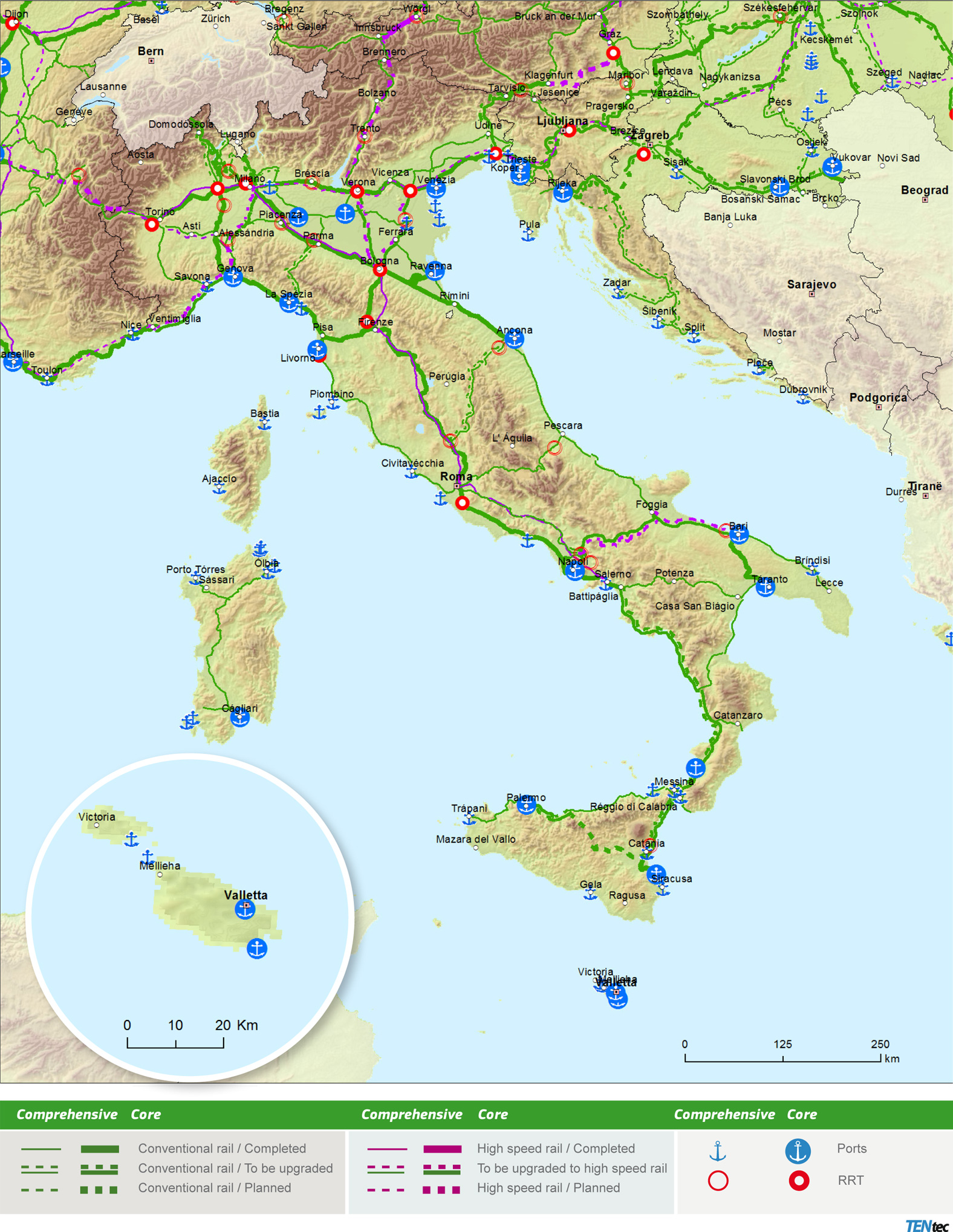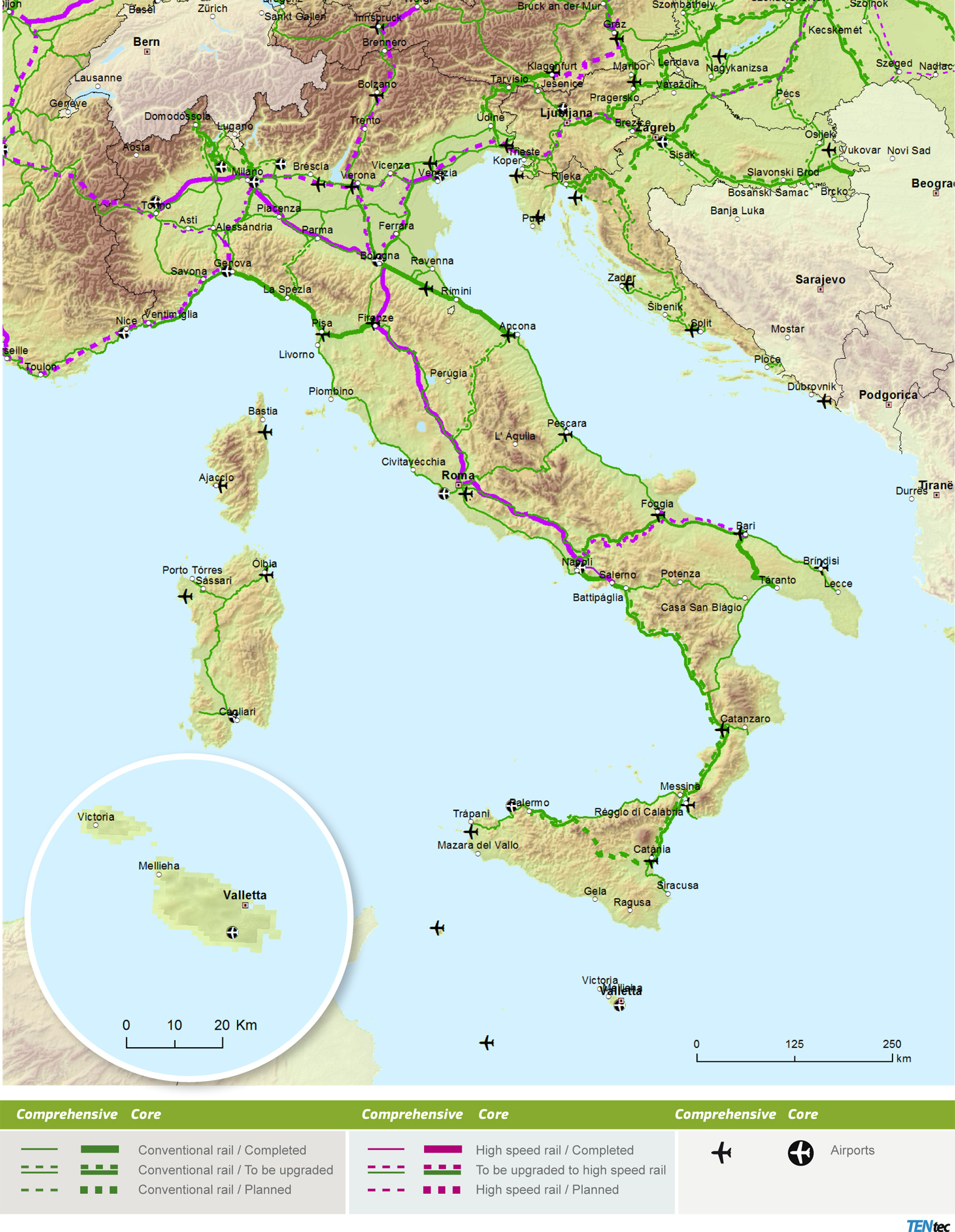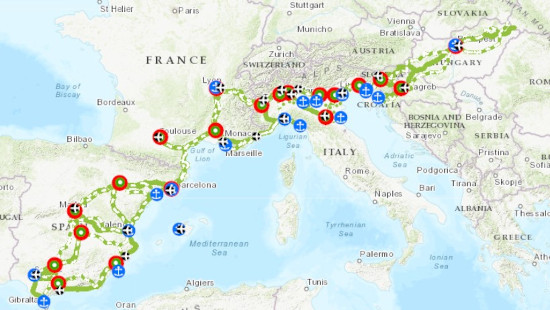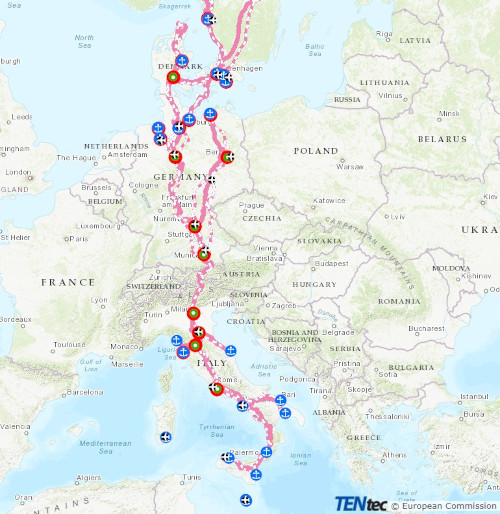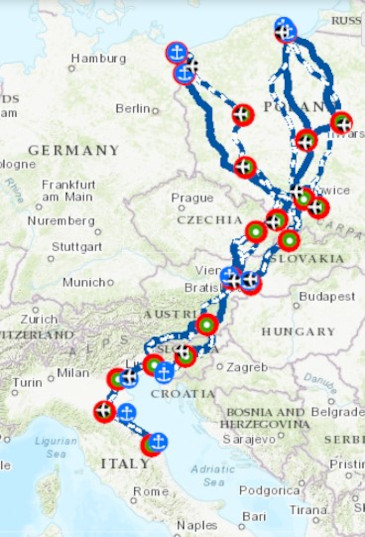The backbone of the Trans-European Transport Network
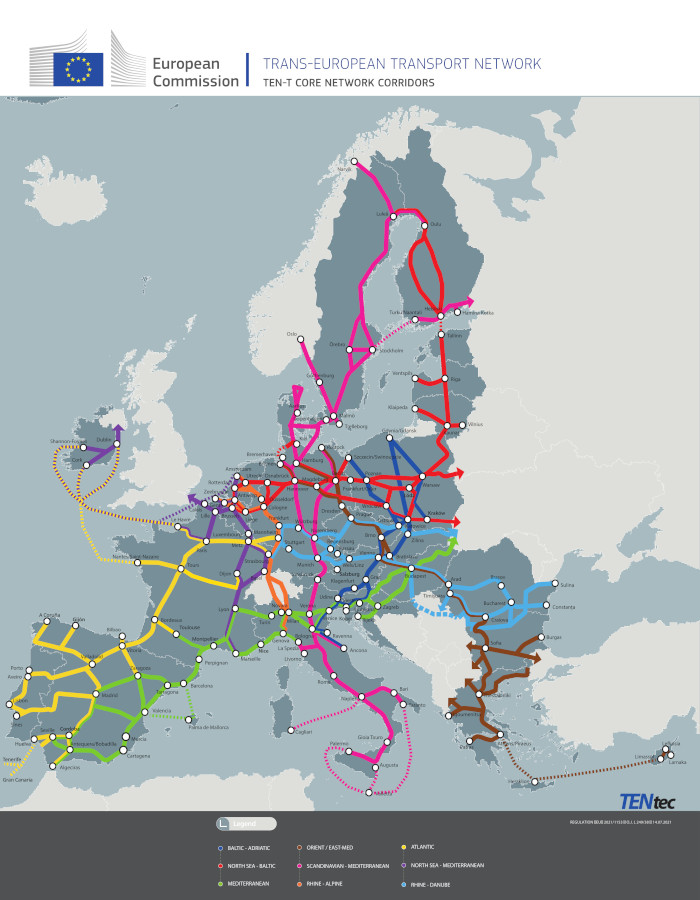
The European policy for trans-European transport, energy and networks (TENs) was established in 1993 on the basis of Title XVI, articles 170-172, of the Treaty on the Functioning of the European Union. The TEN-T network aims to create a single European transport area based on a single trans-European network that is complete, integrated and multimodal including land, sea and air transport, which covers and links all EU member states in an intermodal and interoperable manner.
The TEN-T Network facilitates the integration of European countries opening the way to a single market and supports a transport decarbonisation policy and an active role by the EU in the global fight against climate change.
EU Regulation 1315/2013, which defined the trans-European transport network TEN-T, provides for the creation of a network based on two levels for the development of the international network:
- The Comprehensive Network, i.e. a global network (to be created by 2050) aimed at guaranteeing full coverage across the EU and accessibility to all regions.
- The Core Network, i.e. a central EU network (to be created by 2030) which includes the global network sections most strategically important for achieving the development objectives of the trans-European transport network. Its completion is based on a “corridor approach”.
